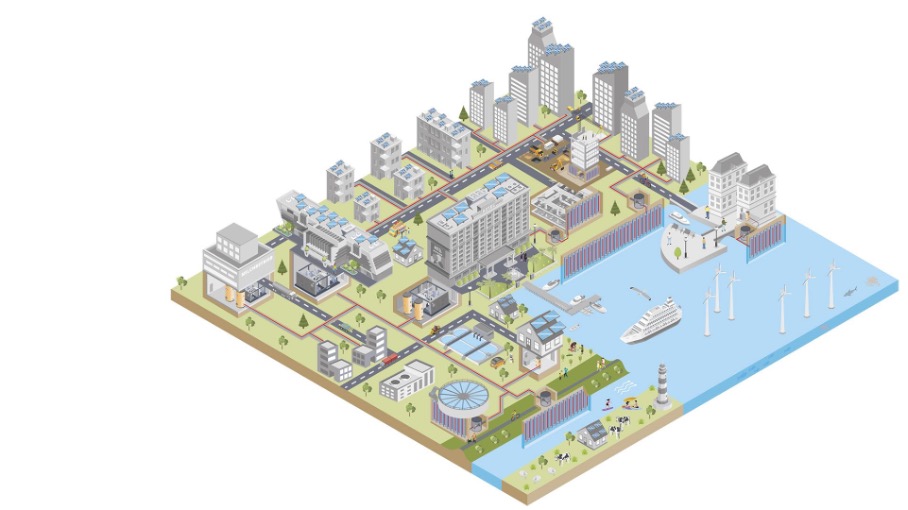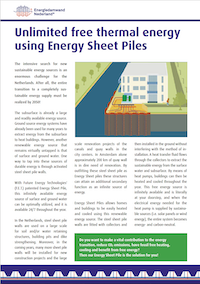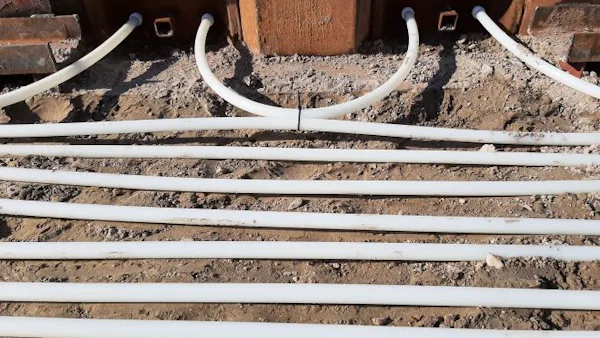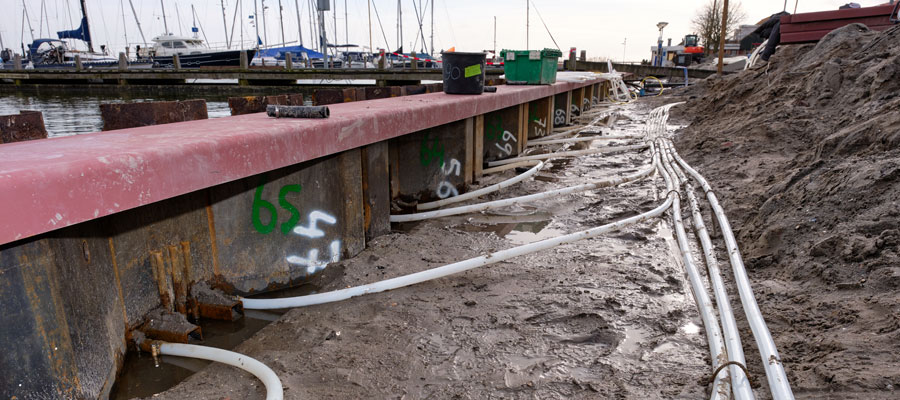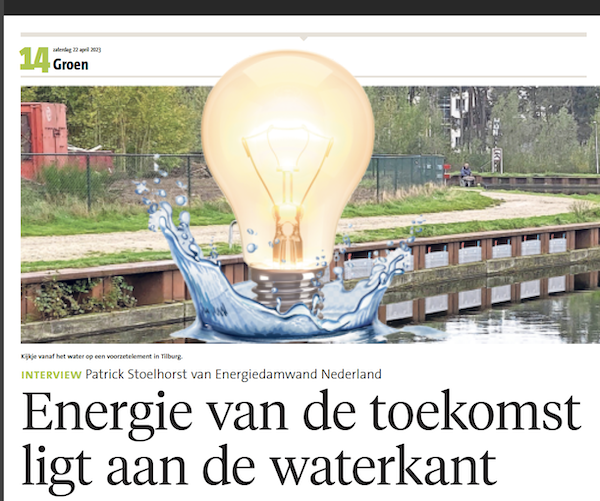The Netherlands is a country surrounded by water. Our canals, rivers, ditches and waterways are not only characteristic of the landscape, but also a vast and untapped source of energy. According to the Foundation for Applied Research in Water Management (Stichting Toegepast Onderzoek Waterbeheer), thermal energy from surface water could meet approximately 40 percent of the heating demand in our built environment. To harness this source, Energiedamwand Nederland BV introduces the ‘Energy Sheet Pile’, a steel sheet pile equipped with collectors. Warmte365 spoke with Patrick Stoelhorst, co-owner of Gooimeer BV and Energiedamwand Nederland, about its potential and how it works.
While most people may not be familiar with the term ‘steel sheet pile’, many will recognize the U-shaped profile. But even if you have never seen them, there’s a good chance they are nearby.
“You can’t always see them,” Stoelhorst explains. “For example, when you drive along the quays in Amsterdam, you might think they’re all made of stone. But behind many of those stone walls, there’s a steel sheet pile. They are used so extensively that if you start paying attention, you’ll almost trip over them.”
Gooimeer BV has been dealing with steel sheet piles since 1976, and according to Stoelhorst, the company started working on the idea of the energy sheet pile about twelve years ago: “At that time, there was no ambition to heat everything sustainably, so we were pioneers.” However, twelve years later, the system has been patented, extensively tested and successfully applied to various projects.
How does the energy sheet pile work?
In simple terms, the energy sheet pile is a thermally activated steel sheet pile. The steel sheet piles are equipped with collectors before they are installed in the ground. A special fluid flows through these collectors in a closed system. This fluid extracts heat or cold from the surface and groundwaters and transfers it to a heat pump via a distribution point, which can be used to heat a home.
According to Stoelhorst, sheet piles are an excellent way to extract thermal energy. “The systems advantage is that everything is made of steel, which has a very high thermal conductivity. So, in essence, your steel sheet pile becomes a very large collector,” Stoelhorst explains.
“Because we have this high thermal conductivity and a large collector, the efficiency is quite high, especially compared to other sustainable energy sources,” Stoelhorst continues. According to the website, energy sheet piles can achieve a Seasonal Coefficient of Performance (SCOP) of 5.0. Stoelhorst further explains that one meter of sheet pile can produce up to 2 kilowatts of power using this method.
Another significant advantage, according to Stoelhorst, is that installation is relatively easy and cost-effective. Unlike with ground heat, you don’t have to drill very deep: the sheet piles are driven or vibrated into the ground, and normally you can install 30 to 40 meters per day.
By vibrating the sheet piles into place, soil layers are not disrupted. This method is also relatively inexpensive because energy sheet piles are used in projects where sheet piles are already being installed. To turn it into an energy or heat source, you only need to pay for some additional activation costs.
First results
To test their product, Gooimeer, along with their partners, including CRUX Engineering, Delft University of Technology, Eindhoven University of Technology and the ‘Duurzaam Opgewekt’ group, conducted a two-year test in the neighborhood of ‘De Zweth,’ near Delft. According to Stoelhorst, the results were encouraging:
“We collected a lot of data, which shows that the values we calculated correspond very well with the values we measured. For example, during the test, the temperature outside was minus 15 degrees Celsius; everything was covered in snow and ice. Nevertheless, we achieved very good efficiency with our energy sheet piles, which indicated that theory and practice align very well.”
Gooimeer and CRUX Engineering’s technology has since been recognized by various innovation awards. Over the past year and a half, it has won awards such as the Water Innovation Award, the Innovative Energy Awards, and the Greenchoice Energy Prize, and it received an honorable mention in the energy transition category at the VSK Awards.
Potential in the Netherlands
According to Stoelhorst, the Netherlands is the perfect country for innovations like energy sheet piles. “If it doesn’t succeed in the Netherlands, it won’t succeed anywhere,” he says. “We are a leading company in the Netherlands when it comes to steel sheet piles, so we use a lot of steel sheet piles here. We are also a country surrounded by water, with a high groundwater level. This combination makes it so interesting to harness this source.”
“Those steel sheet piles are often located near buildings,” Stoelhorst explains. “So, in essence, you have a heat source or an energy source right on your doorstep, which you can easily tap on to.”
Stoelhorst emphasizes the importance of raising awareness about the potential of this technology: “At the moment, when you have to install sheet piles, I would almost say it’s a no-go to decide not to implement the new technology. These sheet piles will be in place for fifty or a hundred years, so if you don’t do it now, it’s a missed opportunity for the coming years.”

